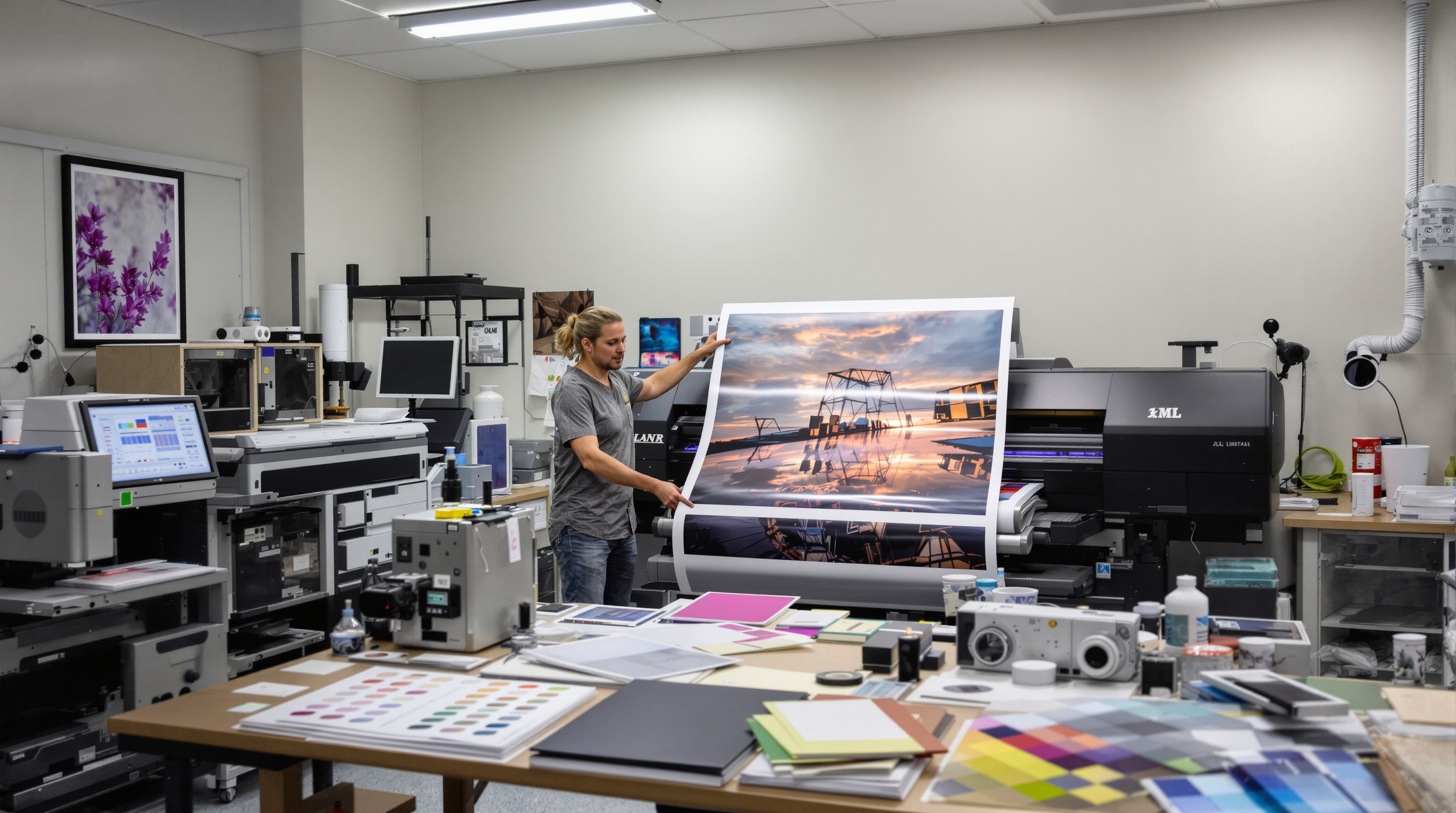The Art and Science of Professional Photo Printing
T.K. Broecker / 12 October 2025

The Art and Precision of Professional Photo Printing
In a digital era where images often live only on screens, professional photo printing restores photography’s tactile and emotional power. Fine art photo labs bridge the gap between digital capture and physical expression—using advanced technology, color science, and craftsmanship to produce archival prints that often surpass the photographer’s original vision. This process combines technical mastery with artistic sensitivity to turn digital files into lasting works of art.
The Technology Behind Fine Art Photo Printing
At the heart of modern professional printing lies giclée technology—from the French gicler, meaning “to spray.” These high-precision inkjet systems use microscopic nozzles that release droplets as small as 1.5 picoliters onto archival-grade substrates, delivering exceptional detail and tonal control.
Professional photo labs utilize printers featuring 8–12 ink channels, extending the color gamut beyond traditional CMYK. Additional inks such as light cyan, light magenta, multiple blacks, and specialty tones enable smoother gradations and refined color accuracy.
Why Pigment-Based Inks Matter
- Pigment inks resist fading and environmental degradation far better than dye-based alternatives.
- Microscopic pigment particles create prints rated for 100+ years of stability when properly stored.
- Manufacturers like Epson, Canon, and HP engineer proprietary pigment formulations for archival performance.
True-to-Life Color Reproduction
Color accuracy is one of the most demanding elements of professional printing. Achieving true fidelity requires a fully calibrated workflow that controls every variable affecting color capture, processing, and reproduction.
Color Calibration
- Displays are calibrated using spectrophotometers and colorimeters for consistent accuracy.
- Labs often recalibrate daily to maintain precise results.
ICC Color Management
- ICC profiles define how color translates between devices and materials.
- Each printer, ink, and paper combination receives a custom ICC profile.
- Soft proofing simulates final output on-screen; hard proofs offer physical accuracy checks.
Through this rigorous process, master printers ensure that every hue and tonal transition is faithfully reproduced, creating prints that reflect the artist’s original intent with precision. For a practical overview of profiles and device translation, see X-Rite’s guide to ICC profiles.
Premium Photo Papers and Substrates
The choice of substrate—paper or alternative medium—profoundly affects a print’s texture, color response, and archival properties. Fine art photo labs curate an array of high-end materials to complement diverse artistic visions.
Popular Fine Art Surfaces
- Baryta Papers: Barium sulfate coating replicates traditional darkroom prints with rich tonal depth.
- Cotton Rag Papers: 100% cotton fibers provide museum-grade archival stability and textured elegance.
- Metallic Papers: Pearlescent sheen enhances vibrancy and depth for high-contrast imagery.
- Canvas: Adds a painterly quality with texture and eliminates the need for glass framing.
Finishing options enhance both protection and presentation. Labs offer glossy, semi-gloss, matte, and textured coatings, as well as mounting and UV-protective treatments to safeguard prints against environmental damage.
The Professional Print Workflow
What distinguishes professional photo labs is their comprehensive, repeatable workflow—a system designed to ensure exceptional quality from file submission to finished print.
- File Preparation: Technicians review resolution, color space, and tonal balance for print readiness.
- Consultation: Collaboration with photographers optimizes files for specific media and finishes.
- Quality Control: Multiple checkpoints verify color accuracy and print integrity under 5000K lighting.
- Finishing: Skilled craftspeople hand-trim, mount, and apply protective coatings as required.
- Proofing: G7-certified or ISO-standard proofs guarantee consistent reproduction across print runs.
This meticulous workflow reflects the lab’s dual expertise in both technical science and fine art—ensuring that every print meets exacting professional standards.
Conclusion: Elevating Photography Through Print
Professional photo printing represents the intersection of technology and artistry. Fine art labs transform digital captures into enduring, tangible works—prints that honor both the photographer’s craft and the viewer’s experience. Far from mere reproduction, each print embodies creative collaboration, precision, and permanence.
Explore more techniques, materials, and project ideas on the Iris Pro Imaging blog.